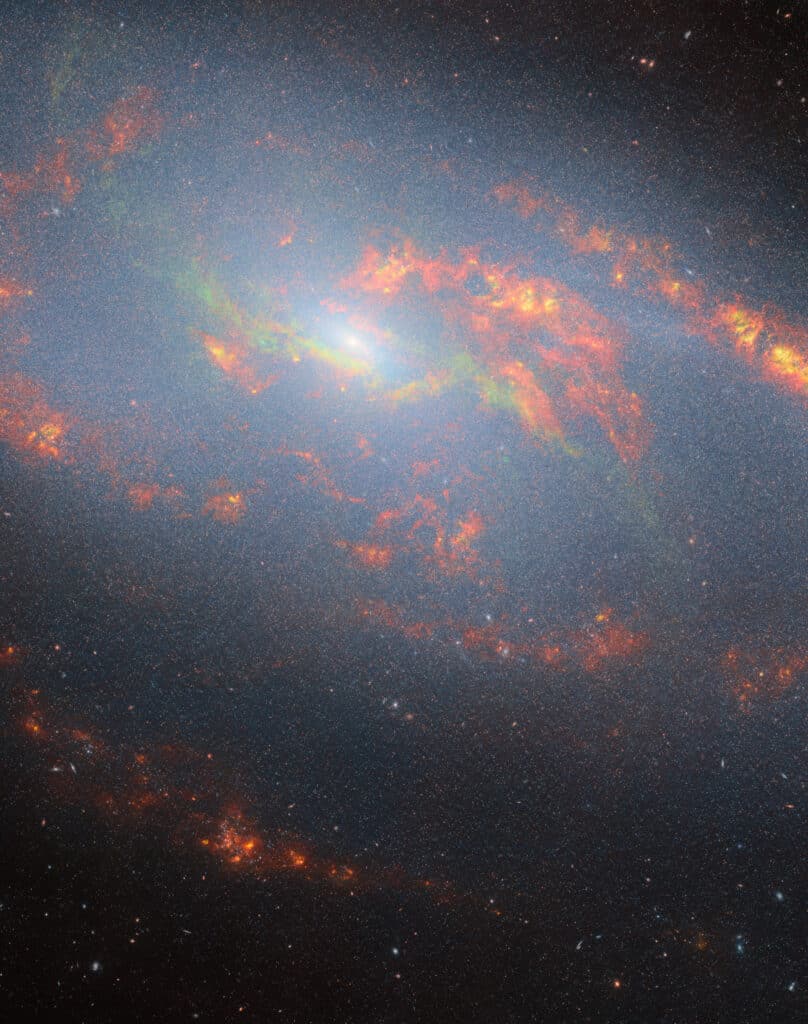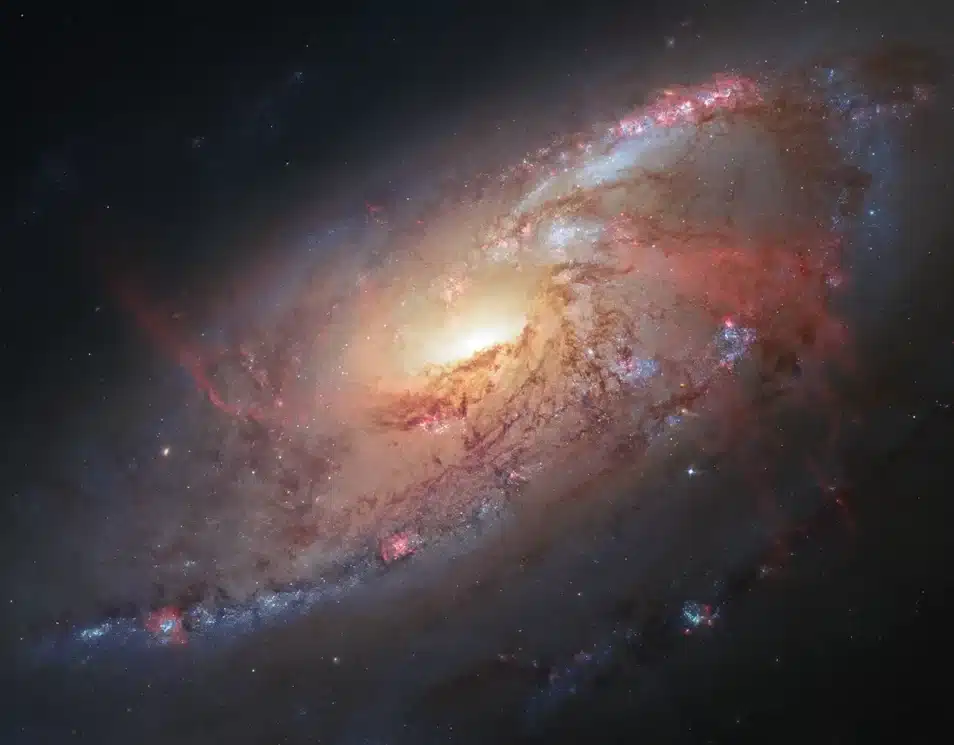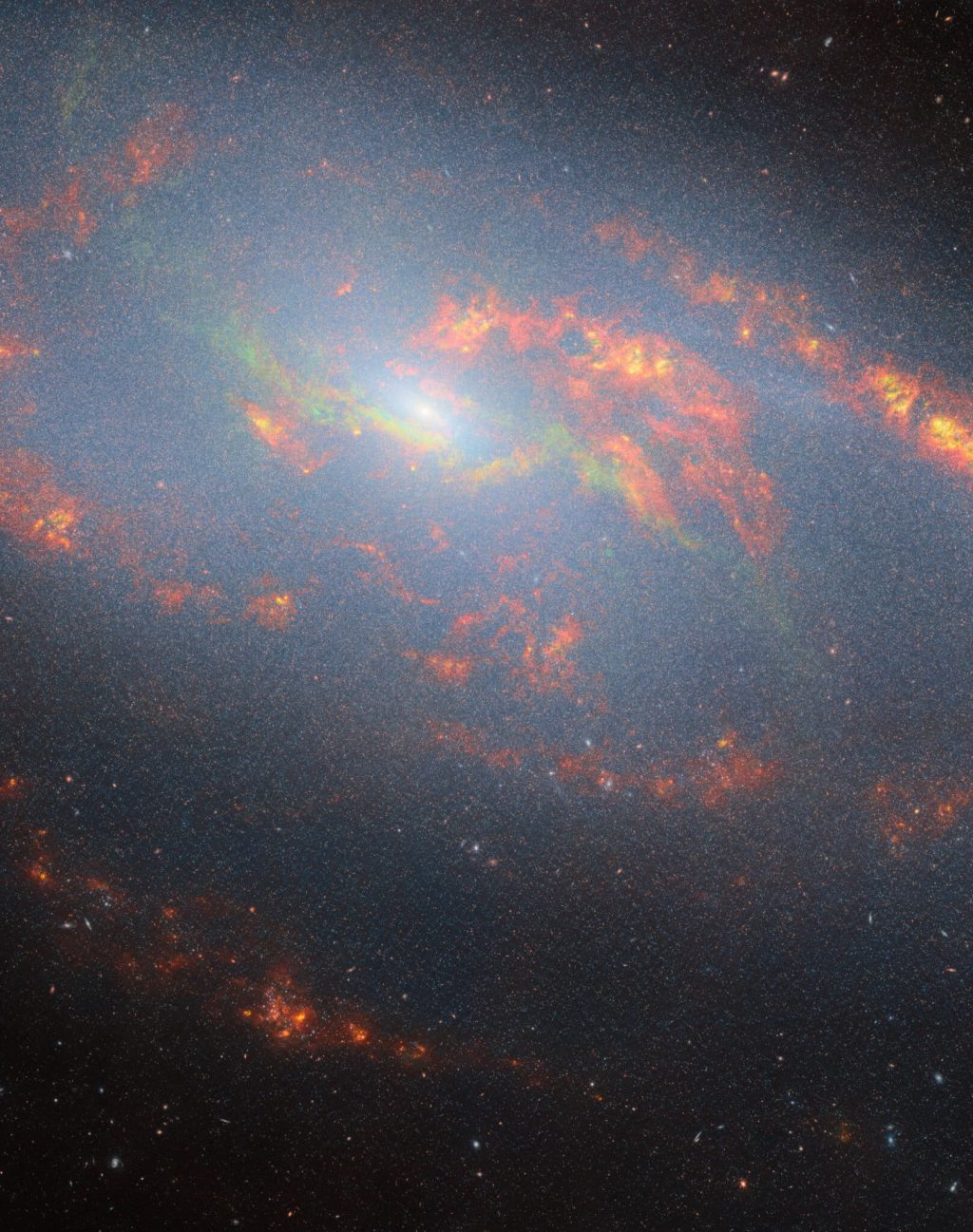This new image from the James Webb Space Telescope focuses on the galaxy Messier 106, also known as NGC 4258. This spiral galaxy is one of the brightest and closest galaxies in the constellation Hounds of the Hunt, located just 23 million light-years away.
The remarkably active nucleus of this galaxy makes the central region of M106 particularly interesting to astronomers, also because several supernovae have been observed there – in 1981 and 2014.
At the heart of this galaxy, like most spiral galaxies, is a supermassive black hole, but this one is particularly active. Unlike the black hole at the center of our own Milky Way, which intermittently sucks in gas, the black hole in Messier 106 is constantly devouring matter. As the gas spirals toward the black hole, it heats up and emits powerful radiation.
This web image of the center of M106 shows these processes in detail:

A bright blue-white glow emanates from the heart of this spiral galaxy. The blue areas in this image reflect the distribution of stars. Through the glow, distant galaxies can also be seen. The galaxy’s arms are broad, winding paths of glowing gas and dust, in red and orange. Orange areas indicate warmer dust, while red shades represent cooler dust. Finally, two additional spiral arms can be seen in green.
These extra arms are special: they are visible in radio waves and X-rays, but they do not glow in visible light. Unlike regular arms, these arms are made of hot gas rather than forming stars. Astronomers think these extra arms are the result of black hole activity, likely caused by the outflow of material generated by the violent churning of gas around the black hole.


Messier 106 turns out to be a galaxy full of surprises. While the galaxy’s arms orbit majestically around the center, the mysterious extra arms give us a rare glimpse into the dynamic processes at the core. Discoveries like these once again underscore the importance of modern telescopes like Webb in revealing the complex and fascinating nature of the universe. With each new look into deep space, we come closer to understanding the forces that shape and influence galaxies.
Click here Download a high-resolution image of a web image detailing the central region of Messier 106.
In recent decades, space telescopes and satellites have captured beautiful images of nebulae, galaxies, stellar nurseries, and planets. Every weekend, we take a great space image from the archives. Enjoy all the images? See them on this page.

“Lifelong entrepreneur. Total writer. Internet ninja. Analyst. Friendly music enthusiast.”











More Stories
Monster Jam Showdown Launch Trailer
The European Digital Twin Ocean prototype reveals many possibilities
Instagram now lets you add a song to your account